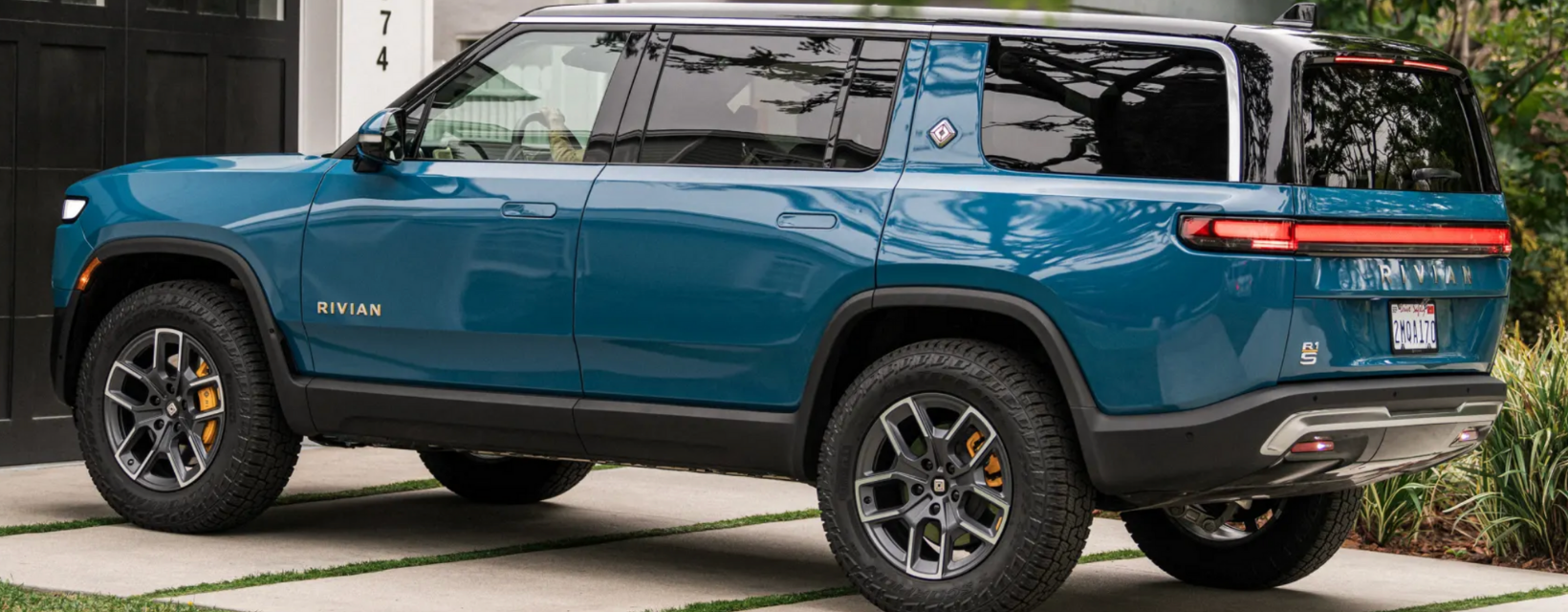Loup is not invested in Rivian because the valuation makes us uncomfortable. That’s neither here nor there, because the fact is shares of RIVN keep going higher. I believe the spike is a combination of scarcity value meets theme investing.
Market Cap Comparisons
As a starting point, the top five EV automakers have a combined value of about $1.25T. This includes Tesla at $1T, Rivian at $125B, Lucid at $70B, Xpeng at $41B, and Li Auto at $31B. In comparison, the top five traditional automakers have a combined value of about $600B. Deliveries for the top five EV companies will account for about 3% of global auto sales in 2021. The wide valuation gap between EV-only makers and traditional OEMs is of course related to growth expectations over the next decade. In short, investors have voted on who they believe will be the long-term winners in auto.
Why is RIVN spiking?
Rivan went public at a $60B valuation and within two days, the value of the company more than doubled to $125B. While Rivian’s valuation is eye-opening, the path to it is understandable. I believe the spike is due to a combination of two things. First, Rivian’s partners, which include Amazon and Ford, check a quality box for institutional investors that most public EV companies can’t check. Second is the rise of theme investing, of which EVs are especially intoxicating to investors given the rise of TSLA, and to a lesser extent, LCID. Putting it together, it’s the fear of missing out that has further fueled the rise in RIVN shares.
Uncomfortable with Valuation
My framework around Rivian’s valuation starts with the underlying question, how many cars will Rivian sell in five years? That is more difficult to answer because there’s less visibility into the models Rivian will be selling over that time period. By comparison, Tesla has given investors a more clear five-year vehicle roadmap with the addition of Cybertruck, along with the likely Model 2 during that time (Tesla Semi won’t move the needle).
Back to the Rivian delivery question. Since the five-year model lineup picture is difficult to predict, I anchor in a two-year view, based on the current lineup of three Rivian models: the R1T (pickup), R1S (SUV), and Fleet (Amazon Prime delivery truck). The list price of the R1T and R1S is $70k, which means the average selling price will be around $80k. This is below Tesla’s S&X average selling price of around $95k. Tesla will sell about 70k vehicles per year of these high-end models. In other words, if you price an EV for $95k, you’re likely going to sell around 70k units a year.
Since Rivian’s two consumer models are less expensive than Model S&X, demand should be higher. I’m expecting around 100k deliveries for full-year 2023. Add on top of that fleet deliveries of 50k in 2023, and I get to 150k total deliveries. Tesla is expected to sell nearly 2m cars in 2023. In other words, excluding cash, investors are valuing RIVN at about $750k per 2023 delivery, compared to Tesla valued at $500k per 2023 delivery. An adjustment to the Tesla metric must be made to factor in the value of energy and storage, FSD, and insurances business, which I put at $150B.
Adjusting the Rivian vs. Tesla exercise to an apples-to-apples comparison suggests investors are paying about $750k per 2023 Rivian delivery and $425k for a Tesla delivery. In other words, using this approach, shares of RIVN are valued about 50% higher than shares of TSLA.
Patience is a virtue
Cash is king, and the fact Rivian has raised $12B in cash eliminates the viability question that plagued shares of Tesla for three years during its product line expansion investment ramp. Rivian says the cash on hand also accelerates how quickly it can grow. That’s true, however, moving fast in auto is slow by tech standards. It will take a couple of years for the Rivian production ramp to be validated, which should be a reminder to RIVN investors that patience is a virtue.
